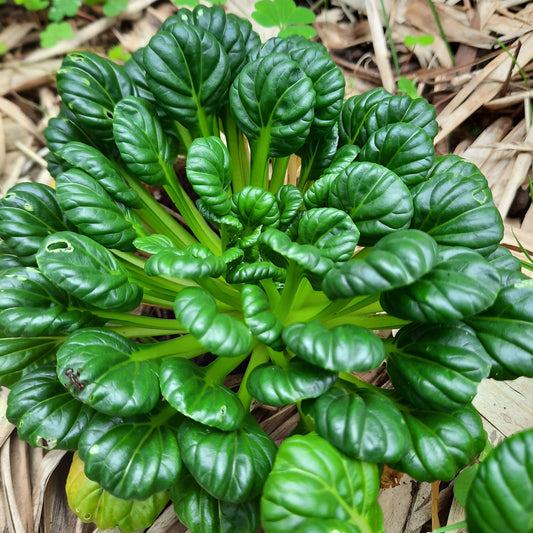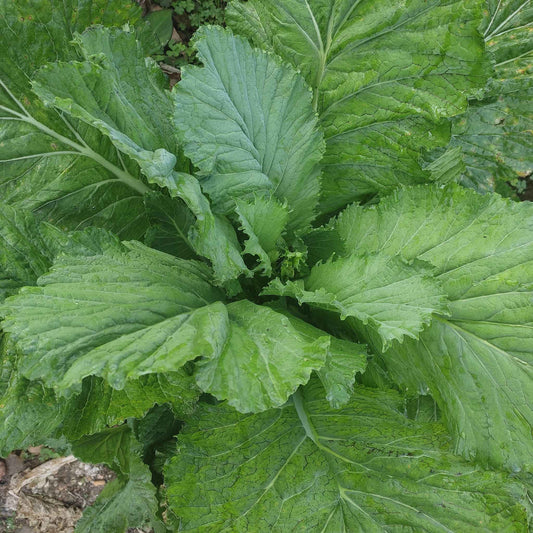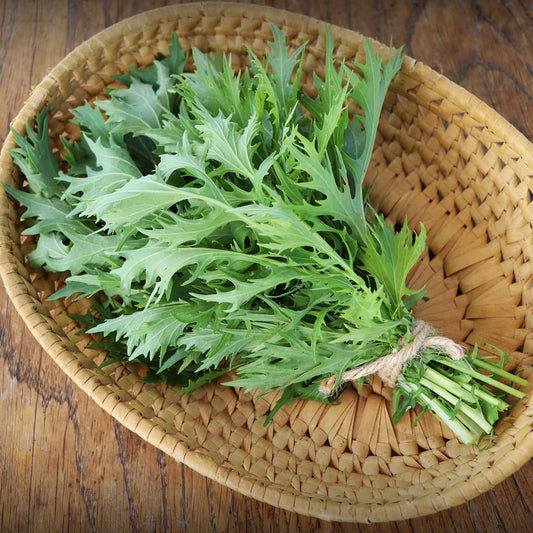-
main-collection-product-grid

Mustard Seeds - Old Fashioned
Delicious steamed or sauteed; also extremely popular eaten raw with saladMustard Seeds - Old Fashioned
Delicious steamed or sauteed; also extremely popular eaten raw with saladRegular price As Low As $4.99Regular priceUnit price per -
main-collection-product-grid

Mustard Seeds - Tatsoi
Used in Asian cuisine, best flavor and nutritional value when eaten rawMustard Seeds - Tatsoi
Used in Asian cuisine, best flavor and nutritional value when eaten rawRegular price As Low As $4.99Regular priceUnit price per -
main-collection-product-grid

Mustard Seeds - Florida Broadleaf
A mild flavored, southern favoriteMustard Seeds - Florida Broadleaf
A mild flavored, southern favoriteRegular price As Low As $4.99Regular priceUnit price per -
main-collection-product-grid

Mustard Seeds - Tendergreen
Heat and drought resistant, great spinach substituteMustard Seeds - Tendergreen
Heat and drought resistant, great spinach substituteRegular price As Low As $4.99Regular priceUnit price per -
main-collection-product-grid

Mustard Seeds - Mizuna
Mildly sweet peppery leavesMustard Seeds - Mizuna
Mildly sweet peppery leavesRegular price As Low As $4.99Regular priceUnit price per -
main-collection-product-grid

Mustard Seeds - Southern Giant
Harvest young for salads, use in soups and stir fries as it maturesMustard Seeds - Southern Giant
Harvest young for salads, use in soups and stir fries as it maturesRegular price As Low As $4.99Regular priceUnit price per -
main-collection-product-grid

Mustard Seeds (Organic) - Tendergreen
Known as Spinach Mustard, grows quickly in summerOut of StockMustard Seeds (Organic) - Tendergreen
Known as Spinach Mustard, grows quickly in summerRegular price As Low As $6.99Regular priceUnit price per
About our heirloom mustard seeds
- Great spinach substitute
- Fast growing
- Heat and drought resistant
- Contains health-boosting antioxidants and vitamins.
Grow the best heirloom mustard in your own garden
Is there anyone who doesn't like heirloom mustard? So many recipes benefit from the spicy, pungent flavor. But did you know that mustard can be grown in your own backyard? Mustard, as we know it, is created from mustard leaves, which you can simply cultivate in your own backyard!
Heirloom mustard plants are easy to grow
Heirloom mustard is a cool-season crop, like cabbage and kale, and is a brassica. Hardy in zones 2 through 10, sow your heirloom mustard seeds in the spring or fall for a double crop. Mustard is a simple to grow annual that matures quickly, making it a good choice for vegetable gardens all around the world.
Heirloom mustard seeds can be planted directly into the ground or started indoors. Direct plant mustard seeds three weeks before the last frost in the spring. Every three weeks, plant a new succession of mustard to provide a steady supply of young leaves. In the heat of July, older mustard plants are prone to bolting. Plant heirloom mustard seeds in the middle to late summer for an autumn crop, then pluck greens until the first frost.
Where to plant heirloom mustard seeds
In hotter climates, heirloom mustard may benefit from some shade. Choose a planting spot that receives full or partial light. Multiseed in a half-inch deep furrow dug by hand. If you want bushier plants, plant heirloom mustard seeds at six-inch intervals, but if you simply want to pick immature leaves, plant mustard seeds closer together. Fill in the trench with soil and water the seeds. Heirloom mustard seeds thrive in damp soil, so keep it moist. After one month, when the leaves are about four to six inches tall, harvest heirloom mustard greens. Allow mustard leaves to grow a little longer for more bitter, pungent leaves.
Heirloom mustard has great health benefits
Mustard greens, like other brassicas, are a nutritious powerhouse. Include heirloom mustard greens in your diet for healthier skin, bones, and heart. They're high in vitamins A, K, C, and E, folic acid, calcium, and fiber.
Baby mustard leaves are delicious raw in salads or in sandwiches. Larger leaves can be sauteed to eliminate the bitter flavor, or chopped mustard greens can be used to soups and stews to provide a spicy flavor. Some folks even relish pickled mustard greens!
Choose from three of the best heirloom mustard varieties
There's a mustard variation for every plate and palate. Eden Brothers offers three heirloom mustard varieties, all of which are delicious.
For more information about planting, growing, and harvesting heirloom mustard seeds, see the Mustard Seeds Planting Guide.






